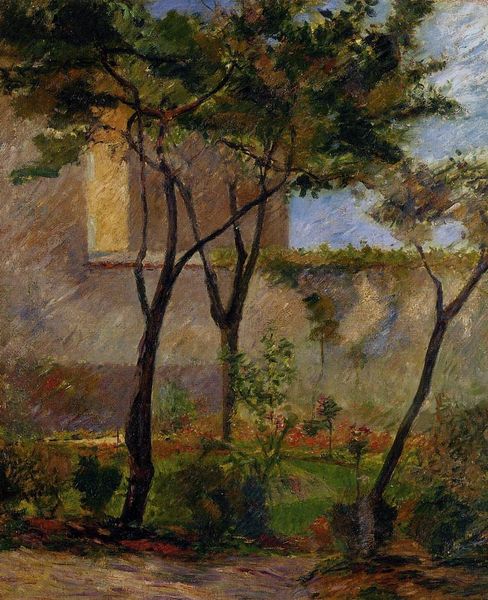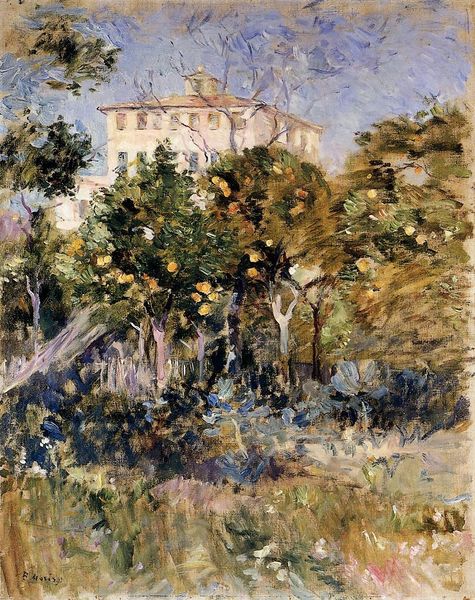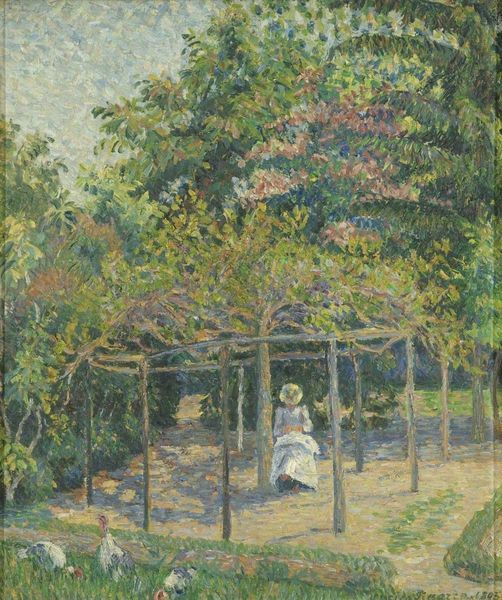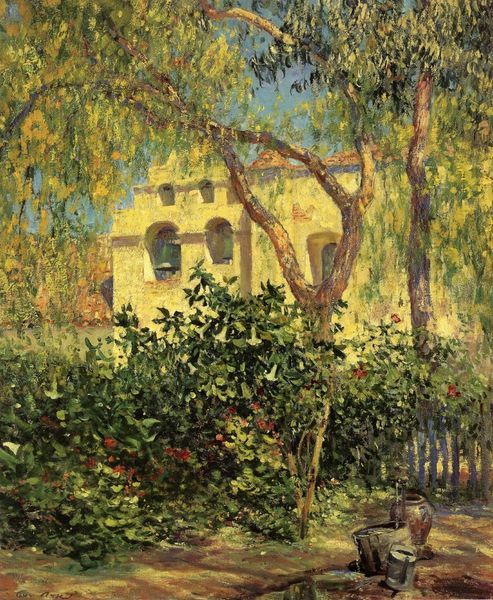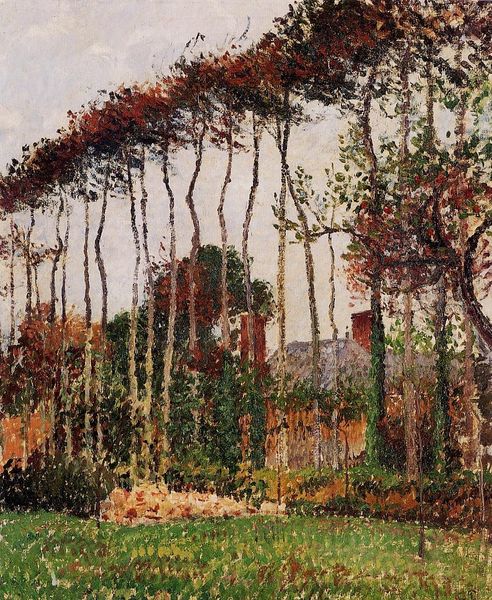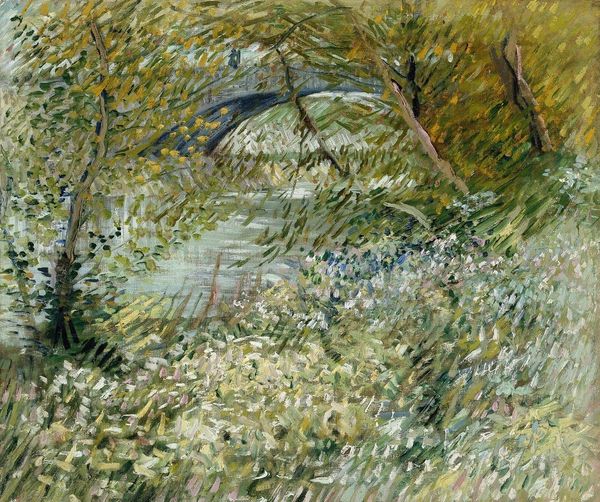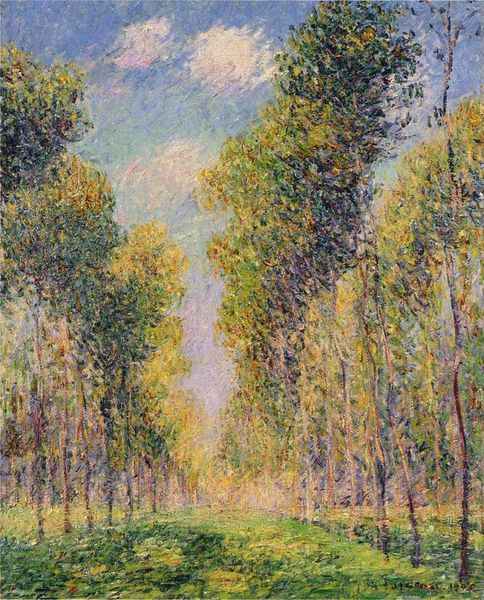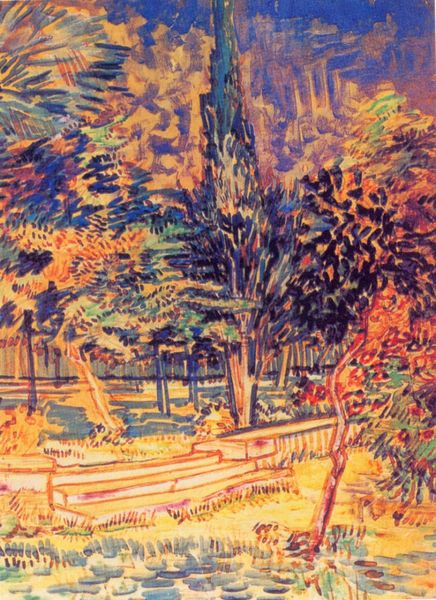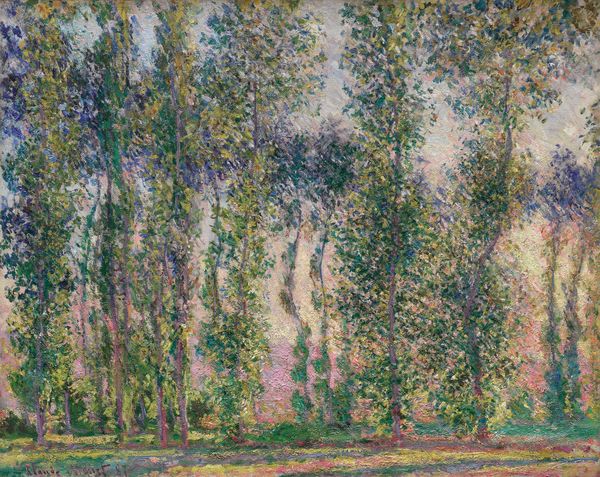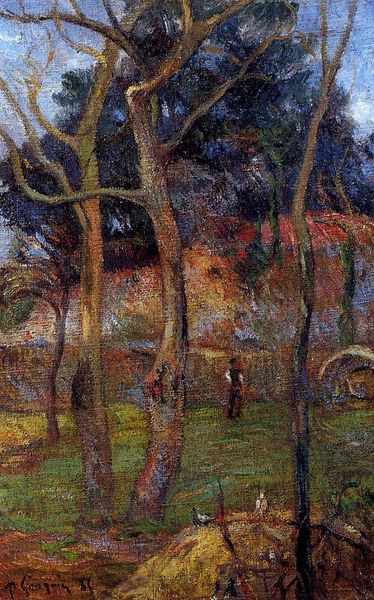
Copyright: Public domain
Editor: This is Claude Monet's "Garden at Vetheuil," painted in 1881. It's an oil painting, and you can really see the texture of the paint, the impasto, up close. It feels so lush and overgrown, almost wild. What stands out to you about this piece? Curator: Well, beyond the immediate impression of a beautiful garden, I think it's critical to consider the materiality and labor involved. Look closely at the brushstrokes—those thick applications of paint. Monet wasn't just capturing a scene; he was actively *constructing* it with pigment. Think about the physical act of applying that much oil paint, the sheer amount of material consumed. Editor: I see what you mean. It's not just about the pretty flowers. It's about the paint itself as a material. Curator: Exactly. And consider the context. Monet wasn't painting for the aristocracy anymore. The rise of the Impressionists coincided with shifts in art markets and consumption patterns. This painting was intended for a new kind of art buyer, one who valued the artist's hand and the experience of viewing, almost more than the subject. What does that intense materiality communicate to this emerging class? Editor: It suggests… authenticity, perhaps? The visible labor implies a kind of honest expression, not just a commissioned portrait for the wealthy? Curator: Precisely. It proposes a shift. Before, art was labor expended for powerful elites, think, for example, Michelangelo painting the Sistine chapel. Monet transforms art into labor expended by and for the emerging classes, giving a fleeting visual expression of a scene and the working classes experiencing them. Also, it proposes "authenticity" as the expression of an artistic mind. Isn’t it interesting how materiality and expression play into that? Editor: That’s a completely different way of seeing it than I initially had. I was so focused on the garden itself, not on how Monet's process relates to a changing society. Curator: These landscapes also became commodities in this cultural transformation! Consider how industrial advancements offered paint in tubes, directly contributing to Monet's capacity to paint outside for extended periods, using methods of mass production and availability. Editor: So, even this idyllic garden scene reflects significant economic and industrial changes? Curator: Indeed. Considering it within its material and historical context opens up a whole new layer of meaning. Editor: I'll never look at an Impressionist painting the same way again. Thank you for this vision.
Comments
No comments
Be the first to comment and join the conversation on the ultimate creative platform.
